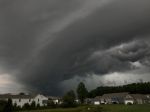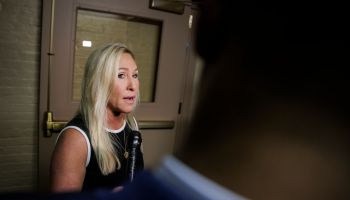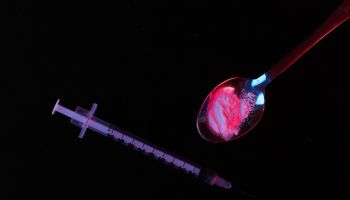Biodisc-Visuals Unlimited, Inc.
A cross-section of a cyanobacterium.
Why scientists are heading underwater to search for a new generation of cures.
by Michael Behar
When Hendrik Luesch invited me to Florida to go snorkeling, I didn’t expect to be wading through brackish muck in the Indian River Lagoon, a 156-mile-long estuary. I’m traveling aboard a 21-foot fishing boat with Luesch, a 40-year-old associate professor of medicinal chemistry at the University of Florida in Gainesville. The visibility sucks, like swimming through a vat of kombucha. Luesch drags his fingers through the water, gathering a wad of flotsam. He raises the specimen into the sunlight to get a better look at the slime, known as cyanobacteria.
Now, advances in technology are making it easier and increasingly profitable to hunt for drugs in the ocean. Marine bioprospectors, as they’re known, are scouring coral reefs, deep-sea trenches, and everything in between. Newman estimates that at least 30 research teams are experimenting with marine-derived compounds for treating cancer, neural degenerative diseases like Alzheimer’s and Parkinson’s, malaria, diabetes, depression, asthma, and other ailments.
Last year, Israeli scientists identified a sea sponge that contains an antibiotic for fighting a type of potentially deadly fungal infection; other researchers announced they’d found a substance in Red Sea coral that targets skin cancer. Trabectedin—a chemotherapy drug modeled after a chemical discovered in sea squirts—has been FDA approved. And just last week, the FDA also approved eribulin mesylate, a synthetic form of a substance derived from a sea sponge, to fight advanced breast cancer. About 15 more compounds are undergoing clinical trials, including an antipain medication with 100 times the potency of morphine but with no addictive potential. Luesch is experimenting with toxins—drawn from several species of cyanobacteria—on several types of cancer, including neuroblastoma, a childhood disease that attacks nerve cells. In July 2009, he launched a four-year, $1.2 million NCI-funded study, part of which entails largazole testing on mice. Cancer patients come next.
Marine bioprospecting could expand the number of available drugs at least 10-fold. A chief reason for this is biodiversity. The oceans sustain innumerable hordes of distinct fish, marine mammals, plants, invertebrates, corals, and microorganisms. The level of diversity is several magnitudes higher than it is on land, and that gives marine bioprospectors an essentially limitless pharmaceutical wellspring to tap. “Compared to terrestrial sources, the oceans have a greater potential to cure many diseases,” says Luesch.
Breakthroughs and Breakdown
Back in his lab at the University of Florida, Luesch’s freezer is crammed with gallon-size Ziplocs and black garbage bags of cyanobacteria algae from Florida and Guam. After thawing a few ounces of algae and wringing out excess seawater, the cyanobacteria are freeze-dried. Next, they’re pulverized by hand into a coarse cocoa-colored powder. The powder is added to a flask, combined with a solvent, and strapped to an oscillating platform called a Belly Dancer that gently swirls the mixture for 24 hours. After two runs through the rotary evaporator—a tabletop, glass distiller—Luesch is left with less than a teaspoon of clear liquid.
From a tiny sample that contains several hundred unknown compounds, Luesch must tease out the lone compound responsible for triggering the cancer kill. His postdoc team uses liquid chromatography to divide the sample into batches that contain somewhere between 20 and 30 individual compounds. Luesch then adds a few drops from each batch to an equal number of cancer cultures and looks for dying cells. The winner is then refined further, more cells are tested, and eventually—after what could be several months of winnowing—he arrives at a single compound. “It’s a lot of tedious manual work,” says Luesch.
Luesch then determines the structure of his mystery molecule using a powerful spectrometer. With a blueprint of his compound, Luesch can synthesize it. “We want to know how it does what it does,” he says. “That’s important because there may be potential side effects.” Synthesizing largazole takes two months. “For other, more complex structures, this effort could take several years.” Even so, duplicating a compound artificially is, in many instances, easier than trying to make it from scratch because extracting it manually is horrendously inefficient. Newman once collected 2,200 pounds of sponge and ended up with just one 100th of an ounce of compound.
Multimillion-dollar spectrometers, auto-mated chromatographs, advances in scuba technology, and state-of-the-art deep-sea submersibles have all made it easier and less costly to probe the sea for new drugs. “A lot of these organisms would have been studied years ago if the oceans had been as accessible to our forbears,” says Bill Gerwick, a professor of pharmaceutical science at the Scripps Institute of Oceanography. With luck, it won’t be long before this new generation of prospectors strikes biological gold.
















